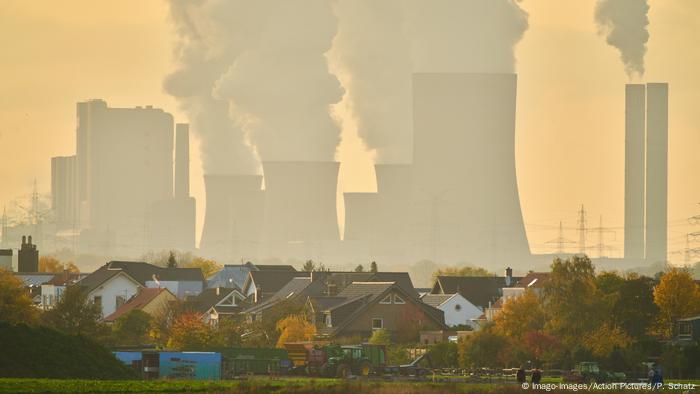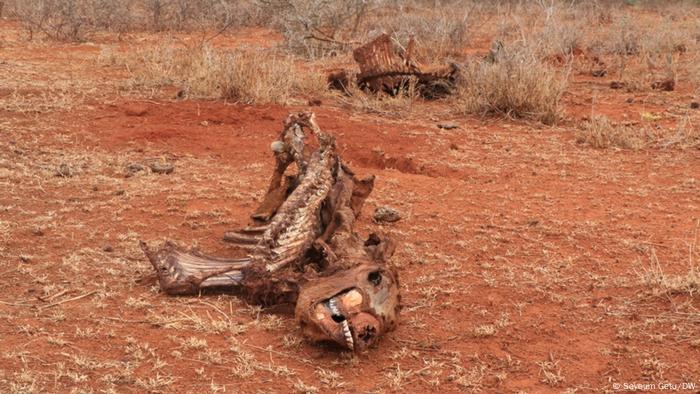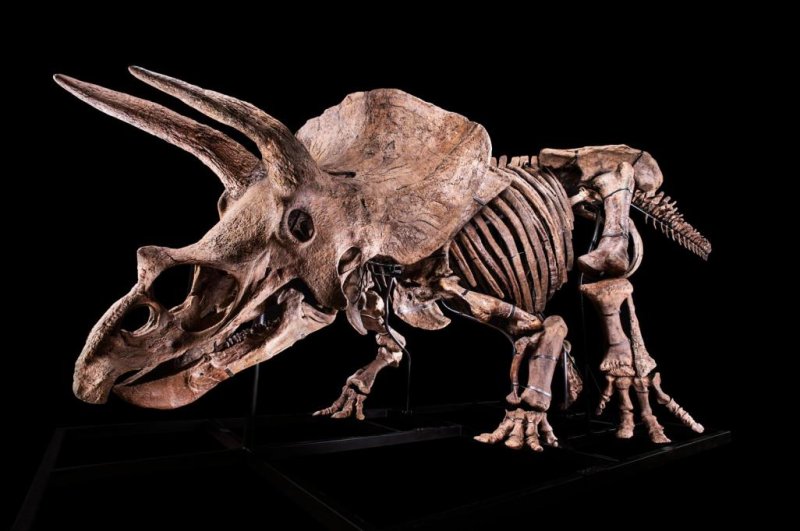A crusade to end grading in high schools

Thomas Toch and Alina Tugend, Special To The Washington Post
Wed, October 20, 2021,
Scott Looney, the head of the Hawken School near Cleveland and a leader in private education, had become disenchanted. The majority of American high schools, even the best money could buy, he believed, were delivering a misguided education. They treated students as passive receptacles and downplayed the importance of attributes such as collaboration and the many types of learning taking place outside classrooms. They reduced the high school experience of students with college aspirations to a formulaic pursuit of success in a narrow set of advanced courses that blocked many from exploring their passions.
Looney wanted to create a new secondary-school model, not just at Hawken and other privileged private schools, but also for the public school system that educated the vast majority of the nation's students. "The industrial production model of putting kids on an assembly line when they're 4 and moving them through at the same pace, asking them to do functionally the same work, is toxic," he told us at his Hawken office in May.
He envisioned schools where students learned math, history and science not as isolated subjects in classroom-bound courses but while working together to address real-world issues like soil conservation, homelessness and illegal immigration. Such learning would make schooling more meaningful for students and thus more engaging, Looney believed. It would let students demonstrate more talents to colleges, holding out the prospect of a wider, more diverse range of students entering higher education's top ranks.
The existing high school transcript, however, with its simple summary of courses and grades, wouldn't do justice to the interdisciplinary, project-based learning he wanted. It wouldn't capture students' creativity, persistence and other qualities. Looney needed a radically different way to portray students' high school experiences, one that replaced grades with a richer picture. But he didn't know what it was.
Neil Mehta changed that. Mehta was a Hawken parent and faculty member at the Cleveland Clinic Lerner College of Medicine in 2013 when he attended one of Looney's early presentations on his frustrations with high school education. Looney included grades among schooling's "sacred cows" that should be abandoned, proposing instead that students be awarded credits for achieving a school's standards on a range of knowledge, skills and learning traits.
After the presentation, Mehta mentioned to Looney that the Lerner medical school didn't give grades and measured its students' grasp of patient care, health-care systems and other topics by evaluating essays and supporting evidence gathered in electronic portfolios. "We're already doing what you're talking about," he told Looney. Looney met with Mehta, studied the Lerner model, visited its campus and was convinced he could track on a single digital platform the knowledge and skills students acquired during high school, without grades - what he would go on to call a mastery transcript. "I thought, hell, if they could do it at a medical school, I should be able to do it in high schools, where no one dies if you get it wrong."
Today, 275 private high schools and 125 public schools are part of the nonprofit Mastery Transcript Consortium (MTC). They are in various stages of designing and launching the transcript - and working to make Looney's radical vision a reality. Started in 2017, the organization is expanding rapidly.
The head of the Cleveland public school system recently joined the consortium's board of directors, and the consortium is in discussions with state and education officials in North Dakota, Vermont, Utah and elsewhere to bring the transcript to hundreds more public high schools. And after a pilot year, the consortium officially introduced the new transcript last fall, with 250 students in 14 of the member schools applying to more than 200 colleges and universities with the transcript - and earning admission to 170 schools as different as Middlebury College, MIT and the University of Oklahoma.
And yet, despite its early victories, Looney's crusade for a fundamentally different way of capturing students' high school experience has also drawn skeptics. They say that the mastery transcript is a bridge too far for already overburdened schools and college admission offices, and that abandoning grades would hurt disadvantaged students' college prospects.
Indeed, the trajectory thus far of the mastery transcript illuminates how hard it is both to change entrenched educational practices and to level the educational playing field for students from communities with fewer resources. It remains possible that the concept will turn out to be merely an idealistic and flawed pursuit from a passionate educator. Then again, maybe the mastery transcript is, in fact, the harbinger Looney wants it to be - the start of an evolution that expands what learning is, where it happens and how it's measured.
Looney, 57, was an unlikely revolutionary. He grew up in a working-class Chicago suburb, the son of a police officer and a customer service rep for a manufacturing company; he was born when his parents were teenagers. He went to desultory public schools, worked as a drugstore stock clerk at night, and was the first in his family to finish college, DePauw University in Indiana, where he showed up in a black Rush T-shirt. He graduated with a degree in psychology and went to work for schools that were a world apart from those he encountered growing up.
Looney parlayed a DePauw connection into a low-level admissions job at the private Phillips Academy in Andover, Mass., a quintessential New England boarding school serving the wealthy and well-connected since 1778. Next, as an admissions director at Lake Forest Academy, he catered to Chicago elites. During a decade in admissions and administration at Cranbrook Schools in Bloomfield Hills, Mich., he educated auto-industry scions.

Then, in 2006, he was named head of Hawken, a school founded in 1915, when Cleveland was a leading industrial center. Before long, Looney ascended to the executive committee of the National Association of Independent Schools, the professional organization of the private school world. For years, he ran a respected three-day summer retreat for private-school admissions officers in Kennebunkport, Maine.
But if many private school leaders hewed to the status quo, Looney was different. In 2011 he brought Doris Korda, a Bell Laboratories engineer and software entrepreneur turned high school math teacher, to Hawken to revamp the school's instruction. Later, she would help Looney launch a new Hawken high school to serve as a laboratory for his education ideas. It would be a school based entirely on "real world" learning, without traditional teaching and grades.
Looney and Korda built the mastery transcript together, combining the concept of "micro-credentials" emerging in higher education with a version of the digital portfolio - featuring students' work samples - that Looney had discovered at the Lerner medical school. The transcript would reflect students' mastery of competencies in half a dozen curriculum areas selected by their schools, many of them reaching beyond the borders of conventional high school subjects and classrooms. Students might earn mastery credits for "understanding cultural differences" in a school's "global perspectives" curriculum category, for example, by studying non-Western history or by working on immigration issues at a local nonprofit.
In a sharp break with tradition, mastery credits would be based on a school's standards rather than teacher judgment - in the same way that Advanced Placement tests are scored against national AP standards. Students would submit work to teams of teachers and outside experts, earning credit if they met school benchmarks. If not, they'd improve their work and resubmit it, a process stressing student growth. "Grades are teacher-level credits, not institutional credits, and given the arbitrariness of teacher grading, class rankings are absurd," Looney told us.
An early sketch of the transcript looked like a page full of Boy Scout badges. With the help of a Seattle consulting company, Looney settled on a landing page with students' contact information and personal statements, a school profile and a graphic akin to a theater-in-the-round seating chart showing the number of credits students earned in each of their schools' focus areas. It also included summaries of the work students submitted to earn mastery credits - writing, presentations, performances, charts, graphs and photographs, all of which could be uploaded into the transcript and were clickable - as well as a statement of the school's standards, a description of how many advanced credits students at the school typically earn, and teacher comments. There would be no grades.

Looney and Korda knew that if they couldn't get leading colleges and universities to support the mastery model, the transcript and the educational insurgency it represented would be a non-starter. But convincing higher-ed officials wouldn't be easy, given that the traditional transcript, introduced a century ago, was the single most influential component of college admissions.
It meant adding features to the transcript that addressed higher education's concerns, including distinguishing between "foundational credits" that represented graduation requirements and "advanced credits." It also meant that a summary page had to be readable in three minutes, the amount of time admissions officers said they could give the transcript during a first read. The transcripts would live on the MTC website, reached through a student ID number, and they would be printable as PDFs to put in admissions folders - another nod to colleges. (Ultimately, Looney patented the transcript and gave the patent to the MTC.)
But winning over higher education's elites also meant persuading other leading private schools to join his crusade. Private schools educate some 7 percent of the nation's high school students but a third or more of many top colleges' enrollees. And so, Looney reasoned, leveraging their influence could get the Harvards and Stanfords of the world on board while sending a powerful signal to the rest of higher education.
"Higher education takes its signals from the elites, so we had to convince them to take us seriously," he says. Similarly, if he could enlist more brand-name private schools, many other high schools, public and private, would follow, he sensed, in the same way Advanced Placement courses had started in elite private schools and spread throughout public education. "I want to use both the independence that I have as an independent school head and the privilege I have by being proximate to powerful people to put as big a dent in the traditional school model as I can," he told us.
So Looney worked his many private school connections, getting leaders of more than two dozen prominent schools to come to Cleveland in 2016 to hear his transcript pitch. Even he was surprised when nearly every school endorsed his heresy, becoming founding members of his Mastery Transcript Consortium. A second event later that year drew another three dozen top schools.
To convince his Hawken faculty of the value of a transcript that showed a wider range of student talents, Looney blacked out the names on the traditional transcripts of 10 graduating seniors and asked his teachers to identify the students. They couldn't because the students' transcripts were nearly identical. When Looney revealed the students' names and asked the teachers to describe them, they talked at length. "They took the same classes, sat there for the same amount of time, got the same grades, but they were radically different human beings," Looney says.
The Hawken board of trustees didn't need convincing to follow Looney's lead. His enterprising approach had already turned an under-enrolled school with a dispirited faculty into a shining star, with sparkling new buildings, an expanding student body that was more than 30 percent people of color, and Korda's innovative educational experiences. They weren't about to say no to his latest idea.
Saida Brema and Sophia D'Attilio were among the first high school students to use the mastery transcript in college admissions. They were seniors last year at Pathways High, not an elite private school but a racially diverse public charter school housed in a decommissioned Lutheran church on Milwaukee's west side. The mastery transcript was perfect for the ungraded, project-based high school, where students studied election law by drafting voting legislation and learned coding, physics and data analytics by building drones.
D'Attilio, a soft-spoken former gymnast and self-described perfectionist, had met Pathways' minimum of 26 foundational credits across the school's six concentration areas - credits such as historical connections, scientific process and oral fluency. She had also earned nine advanced credits, in topics such as advanced design concepts. She set about constructing her transcript early in her senior year, with the help of a private college counselor provided by her parents, saying in her personal statement that she wanted to "activate the voices of others" - and presenting as samples of her work a podcast she and classmates had produced in a seminar on "Native American Stereotypes in Media and Mascots," background research defending the late-18th-century revolt of enslaved Haitians for a mock trial, and her reflections on producing and directing a school play her junior year.
Despite working as a nanny and teaching gymnastics while attending school, she had everything entered into the MTC portal by November of last year and sent a link to the transcript, along with applications, to a dozen colleges. In December, she was accepted at New York University, one of 4,593 of 17,451 early-decision applicants admitted. She had been anxious about using the gradeless mastery transcript but went ahead with it because, she told us on a Zoom call last winter, "it actually shows you who I am as a person."
NYU agreed. While her transcript required more time to read, the absence of a grade-point average wasn't a problem, says Jonathan Williams, the university's assistant vice president for undergraduate admissions. "The rigor behind a 4.0 grade-point average varies greatly from city to city, school to school, district to district," he says. By offering detailed descriptions of what D'Attilio learned in high school and concrete examples of her work, the mastery transcript provided "a deeper understanding of what kind of learner" she was. "She presented an academic profile that shows that she's smart and thoughtful and committed to learning," he says, "but also a personal profile that's really compelling."

Brema's experience with the mastery transcript was very different. She was born to Sudanese parents in a Kenyan refugee camp and arrived in the States as a 7-year-old speaking Swahili and a bit of English. Her father had been a doctor in Sudan, her mother a health worker, but in Milwaukee her father worked in school transport because his medical credentials weren't recognized. Both parents were busy with six children; Brema had discovered Pathways at a Milwaukee high school fair, and was largely on her own when it came to navigating the college process.
Trying to complete her courses and college applications while working 20 hours a week at a pizzeria and taking care of her 8-year-old brother, she put off organizing her mastery transcript until the last minute. Having to do everything via Zoom during the pandemic didn't help. Nor did the fact that the mastery transcript was new and complicated for Pathways and its seniors to compile in a relatively short time. Pathways' dean of culture spent hours on video conferences with Brema helping her work through it.
She was thinking about applying to nearby Marquette University but didn't get her mastery transcript completed in time; in the end, she applied solely to the University of Wisconsin-Milwaukee, and only after barely meeting the school's deadline. It was, says Brema, who has a sly sense of humor and a wide smile, "a really stressful experience."
But she was happy to be among the 12,584 (out of 14,599 applicants) accepted to the school in the spring. With the university's high admission rate, the question was primarily whether the school would accept Brema's gradeless transcript. It did - and Kathleen Breuer, the admissions coordinator who read Brema's application, told us that the transcript proved helpful, especially after Milwaukee and the dozen other University of Wisconsin schools paused their SAT and ACT testing requirements during the pandemic. While it's easier to judge students with grades, she said, the mastery transcript gave her a clear sense of Brema's writing ability. Plus, Brema's projects coding a computer game and redesigning a classroom "jumped out" at her, demonstrating actual high school work that would have been harder to capture in traditional college applications.
While Pathways' experience with the MTC has had bright spots, it also points to the significant barriers to the transcript's expansion. Even before the school launched the transcript last year, teachers and administrators spent more than a year settling on mastery categories and credits, and ensuring their choices aligned with state education standards - a formidable task for a charter school with ample autonomy, much less a big public school district with many powerful voices. Chicago Public Schools, the nation's third largest district, recently left the mastery transcript out of a school reform project after weighing the work needed to put it in place - and the radical rethinking that would be required of administrators, teachers, parents and students - according to the project's manager, Damarr Smith. "It's a lot harder at a district with over 300,000 students," he says. "How do you bring all the stakeholders together in an equitable way?"
There's also the challenge of training teachers to judge students' work against school mastery standards. Plus, giving students a stake in their transcripts by having them assemble work samples is another heavy lift. Small schools like Pathways and pricey private schools may have the staff to help students, and some students like D'Attilio may have the resources for private counselors. In many public high schools, though, students are on their own, and there aren't enough guidance counselors to go around. "The solution is building advisory systems," says Pathways director Kim Taylor, "with each teacher helping a dozen or so students with their transcripts, starting in the ninth grade." Still, the prospect of large, under-resourced schools managing a thousand or more students' work on mastery transcripts is daunting.
Another hurdle: state regulations tying education funding to school-based learning and mandating substantial numbers of courses in traditional academic subjects. Washington state education authorities, for example, initially wouldn't fully fund an MTC school for the time students spent off-campus learning at a Boeing jet engine plant. Yet increasing numbers of states are granting high schools greater flexibility in how they award graduation credits, and the shuttering of schools during the pandemic is likely to intensify the trend by forcing policymakers to think more flexibly about how and where students learn. What's more, the MTC says there's no reason the mastery transcript can't be used in high schools with conventional courses - as long as schools replace grades with mastery credits.
Perhaps the bigger challenge, research by the Carnegie Foundation for the Advancement of Teaching suggests, is a persistent adherence to traditional education practices. Vermont's largest public high school, in Champlain Valley, abandoned a mastery transcript pilot program last year in the face of the pandemic, but also because school leaders sensed the affluent community wasn't yet ready to do anything that might alter students' college prospects.

The higher education side of the equation isn't any easier. Persuading colleges and universities to embrace the mastery transcript isn't just about admissions, but also scholarships and sports eligibility.
The National Collegiate Athletic Association requires courses, grade-point averages and SAT or ACT scores (suspended during the pandemic) of high-schoolers hoping to play Division I or II sports, as do many state-sponsored scholarship programs. The prestigious, 280,000-student University of California system bases admissions decisions on courses, grades, class rank and, until recently, test scores. Several of the system's campuses admitted MTC students to this fall's first-year class, but through a narrow "admission by exception" policy. And some state universities receiving vast numbers of applications simply won't read those lacking GPAs. "The minute you move away from a formula, it becomes a lot harder and more expensive for institutions," says Angel Pérez, the chief executive of the National Association for College Admission Counseling.
The MTC is working hard to address these challenges. The organization holds weekly open houses via Zoom for admissions officers and reaches out to introduce the mastery transcript to the top five college choices of every MTC student.
And there has been progress. Beyond the 170 colleges and universities admitting students with mastery transcripts last year, the NCAA told us that its eligibility staff would work with schools sending mastery transcripts to translate them into course and grade equivalencies. And many states are willing to provide flexibility in their scholarship programs; lawmakers in Utah, North Dakota and West Virginia have directed their public higher education systems to put alternative transcripts on equal footing with regular transcripts in awarding scholarships.
All this points to a growing sentiment in higher education that Looney is right in arguing that current admissions metrics don't do justice to students' unique talents. "Young people are much more complicated than the model of 'grades plus test score equals success' suggests," says Pérez. While some commentators warn that the gradeless mastery transcript could hurt students with top GPAs in lesser-known high schools, Pérez, who sits on the MTC's higher education advisory board, believes the mastery transcript may help get more underrepresented students into the college pipeline. "Many disadvantaged students may not shine in a rigid testing environment but may shine in other ways," he says.
The decision by many colleges and universities to temporarily abandon SAT and ACT admissions testing during the pandemic has fueled that prospect. "The mastery transcript provides a lot more space for students to articulate different ways that they've learned," Kay Eilers, the University of Wisconsin-Milwaukee's associate vice chancellor of enrollment management, told us. "From an equity lens, there's so much value in students being able to describe their skills and abilities in a variety of ways." And Looney argues the transcript isn't just a better tool for high school students heading to college. "It helps identify themes and threads for career development or trade development," he says, qualities like teamwork and resilience that are important to employers.
Looney isn't naive about the challenges he faces in competing with a deep-rooted element of the education landscape. In his first pitch to private school leaders at the Cleveland Botanical Garden, he suggested they build project-based programs alongside their existing schools because it could take years to transition to high-quality mastery models. But he's undeterred. He launched his project-based school - the Mastery School at Hawken - last fall with three dozen ninth- and 10th-graders near Cleveland's arts district, surrounded by scores of nonprofit organizations offering a wide range of learning opportunities. He envisions the school becoming a 180-student test site for educators around the country to learn from.
When we visited in the spring, teams of students had been studying why caffeinated water wasn't selling in local convenience stores and how to reduce vandalism in abandoned homes in a nearby neighborhood. We attended a session that introduced students to mastery credits and the mastery transcript, giving them the building blocks of this model early in their high school careers - a key to the transcript's success, Looney believes.
It's too early to know how MTC students are doing in college, much less how widely the mastery transcript will travel. The prominent private schools that lent their names to Looney's campaign early on have trailed public charter schools and upstarts in the private sector in launching the mastery transcript, MTC officials say. Elite schools are eager to endorse the work and engage with the consortium's new ideas but have been slowed by old definitions of educational excellence among faculty, boards of trustees and parents. Regardless, Looney's not taking his big bet on the mastery transcript off the table.
"We need another way to see kids," he says, "one that reflects who they really are and what they really learn."
- - -
Thomas Toch is the director of FutureEd, a think tank at Georgetown University's McCourt School of Public Policy. Alina Tugend is a FutureEd senior fellow.
























